
views
Knowing When You Have a Leak in a Wall

Look for standing puddles of water near a wall. This is the simplest way to tell that you have a water leak in your walls. You can be sure that water is leaking in a wall if you see conspicuously wet carpet or notice that the floor is always wet in a certain area of your home. You’re most likely to see wet flooring near major appliances that use water (washing machine, dishwasher) or in the bathroom near the sink, toilet, or shower.
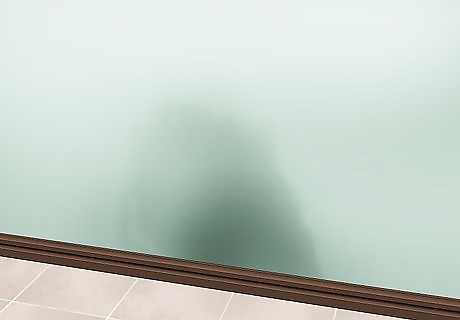
Look for discoloration on a wall. If water is leaking in a wall, eventually the outer surface of the wall will take on some discoloration. Look for sections where the surface of the wall—whether it’s wallpapered, drywall, or even wood—is slightly washed out or has a lighter color than the surrounding area. The shape of the discoloration is likely to be irregular.
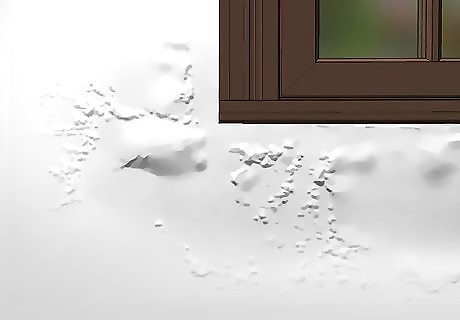
Inspect walls for a change in texture. Walls that have water leaks behind them are likely to develop a bubble-like texture. Paint or wallpaper will twist and buckle, forming rips or bubble-like shapes as the water distorts their usual texture. Water-logged drywall will appear to sag downward. Small bubbles or drooping sections may also indicate the presence of water in your drywall. Walls with advanced leaks in them may also appear to curve outward. Drywall will eventually buckle under the weight of the water saturating it.
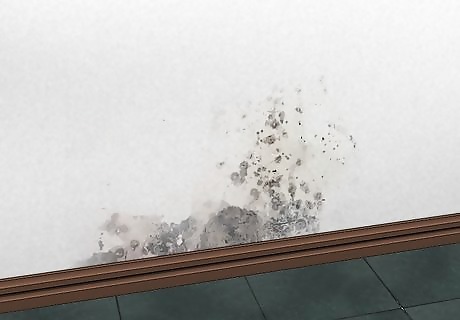
Note any signs of mold or mildew. If a leak in a wall has gone on for some time, mold may be growing in and on your wall. In its early stages, mold looks like a dense cluster of black or brown dots. Even if you don’t see mold, it may still be growing inside of the walls that have been saturated with water by the leak. Mold can cause allergies, and lead to other potentially serious health problems. If you see mold growing on a wall, remove the mold and fix the leak in your wall.
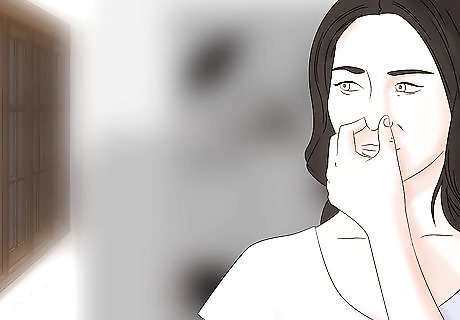
Pay attention to any musty smells. In cases where a leak behind a wall isn’t visible, you may be able to detect the leak using your sense of smell. Since water that leaks into walls never has a chance to dry out, the walls will begin to give off a humid, musty odor. Musty-smelling walls will often be accompanied by other signs of a leak (e.g., discoloration). This will not always be the case though; sometimes an odor will be the only sign of a leak deep in a wall. Thick drywall can effectively absorb water (almost like a sponge) and prevent any visual signs of the leak from showing.
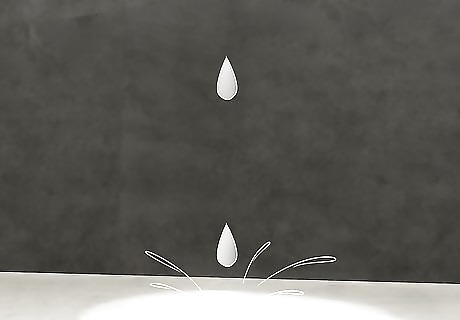
Listen for dripping sounds. Even if a water leak isn’t causing visible damage, you may still be able to detect the leak. Pay attention in the first few seconds after you turn off the shower, flush a toilet, or turn off a sink. If you hear a faint dripping sound coming from a nearby wall, it could be caused by a leaking pipe. Newer piping made of plastic PVC pipe will amplify the sound of dripping, making it easier to hear. If you have an older house with iron pipes, you’ll have a harder time hearing a leak.
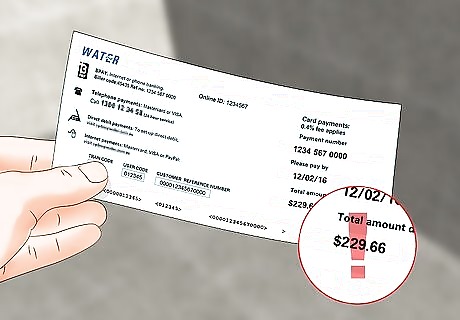
Keep an eye on your water bill. If a significant amount of water is leaking into your walls, it will increase the amount you pay on your monthly water bill. For example, the EPA suggests that a family of 4 typically uses no more than 12,000 gallons (45,000 L) of water in cold months. If you’re using substantially more water and can’t figure out why, it could be because of a leak. Of course, this won’t tell you where the leak is located, but at least it can indicate whether or not you have a leak in a wall.
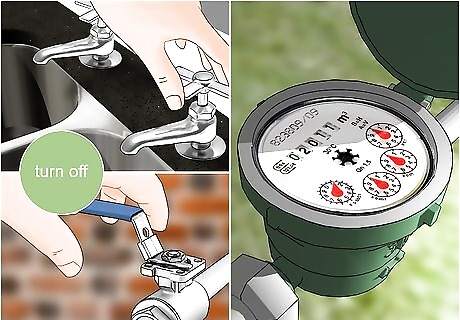
Confirm whether the leak is coming from defective plumbing. Turn off all faucets and water-using appliances in your home, and write down the number on the water meter. Wait about 3 hours. Check the water meter again: if the amount of water used has increased, you’ll know that the leak is coming from indoor plumbing. If the water meter reading doesn’t change over the course of 3 hours, the leak isn’t coming from your plumbing. It may be coming from a leak in your roof or walls, or seeping in through basement walls.
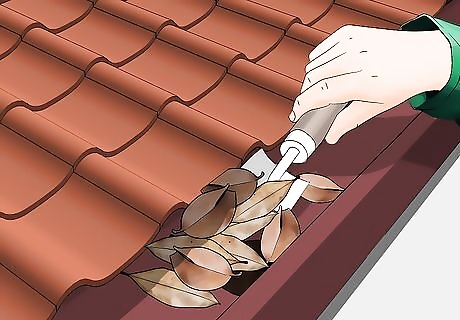
Check for clogged eaves and downspouts. If your water leak isn’t coming from the plumbing, it may be that your eaves or downspouts are clogged. Excess rainwater (or snowmelt) with no downspout to flow through will eventually seep through your roof and walls, resulting in leaks. If you notice that eaves or downspouts are clogged, remove the clogging material (pine needles, leaves, etc.) and restore the flow of water. Even if you don’t notice water leaks in your walls, check your eaves and downspouts annually to make sure they’re not clogged.
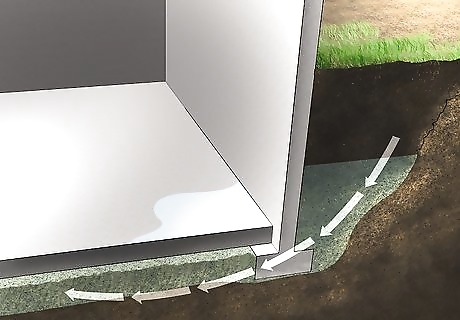
Check for leaks in foundation walls. Given the right conditions, water can seep into your house through the foundation walls. These leaks are seldom caused by faulty plumbing. Foundation walls crack and leak when water soaks into the walls and eventually begins to drain inside of your basement. Leaks in foundation walls are usually fixed in 1 of 2 ways: Externally, by digging a trench around the foundation and sealing the entire underground portion of the foundation with sealant and a protective barrier. Internally, by removing any damaged studs and drywall and patching the crack up with epoxy.
Pinpointing the Leak’s Location
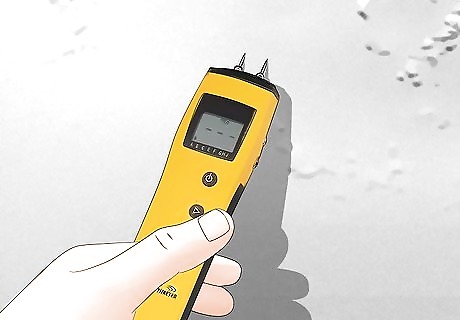
Scan for moisture inside walls with a moisture meter. A moisture meter is a piece of equipment which, when placed directly against a wall, will analyze the moisture content of that wall. If you know that you have a leak within a certain wall, but are unaware of the precise location, place the moisture meter at 5 or 6 different spots on the wall. Whichever spot gives the highest moisture reading is closest to the leak. You can purchase or rent a moisture meter at a large hardware store or home-improvement store. These gadgets are frequently used by professional home-inspectors to find leaks or wet walls.

Find the cold, leaky part of a wall with an infrared camera. Infrared cameras detect heat, and can indicate the temperature of a wall. A leaky, wet wall will have a cooler temperature than the surrounding wall. Train an infrared camera on a wall with a leak, and look to see which section of the wall is the coldest. This will be the section of the wall nearest the leak. When using an infrared camera, hot objects will have red or orange coloring, while cool objects will have blue or purple coloring. You may be able to rent an infrared camera from a professional contractor, a home-improvement center, or from a photography shop.
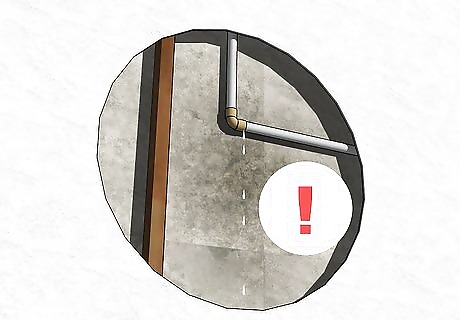
Cut into your drywall to find the source of a leak. Use a utility knife to score a line about 10 inches (25 cm) long into your drywall at the location where you see visible signs of a water leak (mold, discolored drywall, etc.). Then, using a drywall saw, cut along the line you just scored. Cut a hole in the wall large enough for your head to fit inside. Stick your head in the wall and look around until you spot the source of your leak. Enlarge the hole so that you can also insert a flashlight to see better inside the wall, if needed. Often, the patch of wall which shows signs of a leak is not directly in front of the leaky pipe or fixture. Water can drain along the outside of pipes in your walls or trickle many feet down the inside of your walls before the telltale signs of a leak become visible. Both a utility knife and a drywall saw can be purchased at your local hardware store.

















Comments
0 comment